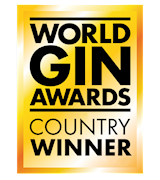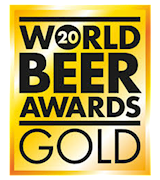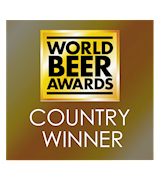TABLE OF CONTENTS
Best Korean Beverage Types
Also known as Korean cinnamon punch, sujeonggwa is a popular traditional dessert drink consumed during the Korean festive holidays alongside with sikye (sweet rice drink). It is known to aid indigestion which is why it’s often served with a large meal.
It's made from water, dried persimmon, and cinnamon and has a dark brown color with a sweet and spicy aroma coming from the ginger and can be served both hot or cold. The earliest mention of this drink dates back to 1849 in the book Dongguksesigi by Hong Seok Mo (a book of seasonal customs), and it describes a drink made from the dried persimmon brew with added ginger and pine nuts.
Maesil-ju is a traditional liqueur made with small-sized Asian plums (Prunus mume). Either unripe green or ripe yellow fruits can be used, sometimes even a mixture of both varieties. The drink is traditionally produced by steeping the fruit, together with sugar, in soju – traditional Korean spirit usually distilled from rice.
The combination is macerated for at least several weeks until the beverage attains its distinctive golden color and bitter-sweet flavor. The fruit is usually strained, though several plums can be left inside jars or bottles. Maesil-ju is traditionally enjoyed neat, served in small shot glasses.
Makgeolli is the oldest Korean rice wine that dates back to the 10th century. It is usually made from rice which is fermented with nuruk—traditional Korean starter. The fermentation process produces a lightly fizzy drink with a typical milky appearance and a slightly sweet flavor.
Makgeolli was the most popular Korean drink until the 1980s when it was largely overshadowed by imports, and it gained the status of a farmer’s drink (nongju). However, in the last decade, the drink has seen an increase in popularity, and it can be found in many South Korean bars.
VARIATIONS OF Makgeolli
MAIN INGREDIENTS
Mugicha is a Japanese name for barley tea—an infusion made by steeping roasted barley grains in hot or cold water. Technically, barley tea is a tisane, and nowadays, it is often made by using teabags consisting of roasted and ground barley.
The drink has ancient origins and is enjoyed in many Asian countries. When brewed, barley tea has a light brown color and a savor, nutty and earthy flavor. It can be sweetened to preference, while the chilled, summer version is often served over ice.
Yuja-cha is a Korean citrus infusion that is mostly enjoyed during winter. It is made with yuya—a lemon-like citrus fruit native to China that was brought to South Korea during Tang dynasty. The tea can be prepared by mixing fresh sliced fruit with sugar and then combining it with warm water.
The other way is to make a fruit preserve (yuja-cheong), which usually consists of sliced yuya, honey or sugar, and water. The tea is then prepared by dissolving the preserve in water. This warming tea should be enjoyed warm and is often claimed to be a soothing health remedy.
Dalgona is a frothy whipped coffee that is served on top of milk. Although it became internationally known as a South Korean beverage, similar versions are common in other Asian countries. The basic version of this coffee is made with equal parts of instant coffee, sugar, and water.
The combination is then whipped until it achieves caramel-like color and foamy texture. It is then traditionally ladled on top of milk. In South Korea, the drink was introduced by an actor Jung Il-woo who first had it in Macau. The flavor and the appearance reminded him of a popular Korean street snack, named dalgona, which is made with melted sugar and baking soda.
Omija-cha is a Korean infusion made with omija—five-flavor berry. Also known as schisandra or magnolia berry, these small red berries are dried before they are used to make omija tea. The berries can be boiled in hot water, which will bring out bitter flavors, but traditionally they are merely steeped in cold water.
The tea is usually sweetened with sugar and honey, and it can be enjoyed warm or cold. The berries will give the drink its distinctive red hue, and they will also provide five omija flavors—hence the name of the fruit—which include saltiness, sweetness, sourness, bitterness, and pungency.
Baekseju is a clear, herb-flavored Korean rice wine made with fermented glutinous rice. Ginseng is the dominant flavor, while the combination usually includes a blend of herbs and spices such as ginger, omija (Schisandra chinensis), goji berries, or cinnamon.
It is a subtly sweet drink with a distinctive herbaceous character, usually bottled at 13% ABV. Although the first written mention of baekseju dates back to the 17th century, in 1992, Kooksoondang introduced the first modern interpretation of the drink.
MAIN INGREDIENTS
Poktanju is a simple South Korean combination of beer and soju—a traditional Koran rice spirit. Also known as soju shot or bomb shot, the drink is made by dropping a shot of soju in a glass of beer. Once prepared, the cocktail is gulped as quickly as possible.
Unsurprisingly, this mixed drink can get people intoxicated quickly. Poktanju is often enjoyed as a social drink. It is considered a slightly more robust and heavier version of somaek, which also combines beer and soju.
Korean soju is distilled from fermented rice, or optionally wheat, barley, sweet potatoes, or tapioca. It is believed that it initially appeared when Mongols introduced the distilling technique to the Koreans, sometime in the 13th century.
The first varieties were made with rice, but in 1965 Korean government introduced a ban on using rice, and many producers looked for alternative sources. Soju is a clear spirit that is usually low in alcohol and has a mild, neutral flavor, which makes it work well with a wide array of dishes.
THE BEST Soju Spirits


Komasa Jyozo Co., Ltd.
Mellowed Kozuru Migaki
ISC-International Spirits Challenge - Gold trophy 2016
Agric. Corp. DanongBio
Gamuchi Soju
IWSC- International wine & spirit competition - Spirit Gold Outstanding 2024
TABLE OF CONTENTS
Best Korean Beverage Producers
Osulloc is a prestigious tea brand from South Korea, specializing in the production of high-quality green teas sourced from Jeju Island, a beautiful volcanic island known for its pristine nature and ideal conditions for tea cultivation. Osulloc is part of the Amorepacific group, one of the largest South Korean conglomerates, renowned for its innovations in the beauty and health industry, as well as its commitment to sustainability and product quality.
Founded with the mission to bring the best of Korean tea to the world, Osulloc takes advantage of the unique climate and soil of Jeju Island. The tea from Osulloc is distinctive due to the volcanic soil, rich in minerals, which allows the teas to develop rich aromas and nutritional values.
BEST Osulloc Teas and Herbal Infusions
AWARDS

SFWSC - San Francisco World Spirits Competition - Double Gold
2024
BEST KI ONE Spirits
AWARDS

World Gin Awards - Country Winner
2024
BEST BUJA GIN CO., LTD. Spirits
AWARDS

World Beer Awards - Gold
2023

World Beer Awards - Country Winner
2023

World Beer Awards - World’s Best Stout & Porter
2022
BEST Original Beer Company Beers
AWARDS

SFWSC - San Francisco World Spirits Competition - Double Gold
2024
BEST Jinmaek Soju Spirits
AWARDS

IWSC- International wine & spirit competition - Spirit Gold
2024
BEST Hwasimjujo Spirits
AWARDS

ISC-International Spirits Challenge - Gold trophy
2013
BEST Hite jinro Spirits
AWARDS

The Gin Masters – Second Tasting - Gold
2022
BEST House of Heritage Distillery Spirits
TABLE OF CONTENTS
Best Korean Beverages
AWARDS

SFWSC - San Francisco World Spirits Competition - Double Gold
2024
AWARDS

SFWSC - San Francisco World Spirits Competition - Double Gold
2024
AWARDS

SFWSC - San Francisco World Spirits Competition - Double Gold
2024
AWARDS

World Gin Awards - Country Winner
2024
AWARDS

World Beer Awards - Gold
2023

World Beer Awards - Country Winner
2023

World Beer Awards - World’s Best Stout & Porter
2022
AWARDS

ISC-International Spirits Challenge - Gold trophy
2013
AWARDS

The Gin Masters – Second Tasting - Gold
2022
Osulloc Sejak is a premium green tea produced by Osulloc Tea, sourced from the volcanic island of Jeju in South Korea. Known for its exceptional quality, Sejak is a type of Korean green tea that falls under the category of young leaves harvested during the early spring season.
Sejak is considered one of the highest-quality green teas. Osulloc Sejak has a refined and mellow taste, often described as having a fresh, grassy flavor with subtle floral notes. It offers a light sweetness with a slight umami undertone, making it smooth and refreshing.
AWARDS

World Beer Awards - Gold
2023

Untappd - 3.6
TasteAtlas food rankings are based on the ratings of the TasteAtlas audience, with a series of mechanisms that recognize real users and that ignore bot, nationalist or local patriotic ratings, and give additional value to the ratings of users that the system recognizes as knowledgeable. TasteAtlas Rankings should not be seen as the final global conclusion about food. Their purpose is to promote excellent local foods, instill pride in traditional dishes, and arouse curiosity about dishes you haven’t tried.


























